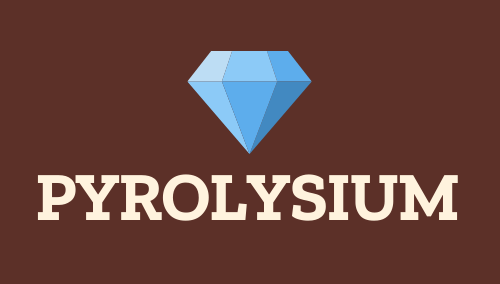In today’s fast-paced world, it’s easy to get caught up in the hustle and bustle of daily life and forget about the impact our actions have on the environment. However, embracing eco-friendly practices is not only essential for preserving our planet but also for creating a sustainable tomorrow. From reducing waste and promoting recycling to conserving water and natural resources, there are countless ways to live a more environmentally conscious lifestyle. In this article, we’ll explore some practical examples of environmental conservation, discuss the benefits of eco-friendly conservation ideas, and provide tips on how to incorporate these practices into your daily routine.

Examples of Environmental Conservation
We’re committed to making a positive impact on our planet, and there are many ways we can contribute to environmental conservation.
- Sustainable Living: Making conscious choices in our daily lives, such as reducing energy consumption, using public transport, carpooling, or driving electric vehicles, can significantly reduce our carbon footprint.
- Waste Reduction and Management: Implementing recycling programs, composting food waste, and properly disposing of hazardous materials can minimize landfill waste and protect ecosystems.
- Conservation Efforts: Supporting organizations that work towards preserving natural habitats, protecting endangered species, and promoting reforestation efforts can have a lasting impact on biodiversity.
- Clean Energy and Renewable Resources: Investing in solar panels, wind turbines, and geothermal energy can reduce reliance on fossil fuels and decrease greenhouse gas emissions.
- Eco-Friendly Technologies: Embracing innovations like pyrolysis, which converts waste into valuable resources, can revolutionize waste management and mitigate climate change.
- Community Engagement and Education: Raising awareness about environmental issues, promoting sustainable practices, and encouraging community involvement can foster a culture of conservation and responsibility.
- Climate Change Mitigation: Advocating for policies that support renewable energy, reducing carbon emissions, and implementing climate-resilient infrastructure can help combat global warming.
- Biodiversity Preservation: Protecting and restoring natural ecosystems, conserving water resources, and preventing pollution can safeguard the health of our planet and its inhabitants.
- Responsible Consumption: Choosing products with minimal packaging, buying locally sourced goods, and avoiding single-use plastics can reduce waste and promote sustainable consumption patterns.
- Environmental Policy and Advocacy: Encouraging governments to implement environmentally friendly policies, supporting legislation that protects the environment, and advocating for climate action can drive meaningful change.
By embracing these examples of environmental conservation, we can collectively create a more sustainable future for ourselves and generations to come.
What Is an Eco-Friendly Environment?
Living in harmony with nature is crucial for preserving our planet’s health and well-being.
- An eco-friendly environment refers to a space where human activities minimize harm to the ecosystem, conserving natural resources and promoting biodiversity.
- This approach involves adopting sustainable practices, reducing waste, and utilizing renewable energy sources to mitigate the negative impacts of human actions on the environment.
Key Components of an Eco-Friendly Environment:
- Sustainable Resource Management: Efficient use and conservation of water, energy, and land to prevent depletion and pollution.
- Waste Reduction and Recycling: Minimizing waste generation through reuse, recycling, and composting to decrease landfill waste and pollution.
- Renewable Energy Sources: Harnessing solar, wind, hydro, and geothermal power to reduce dependence on fossil fuels and lower greenhouse gas emissions.
- Biodiversity Conservation: Protecting and restoring ecosystems, habitats, and species to preserve genetic diversity and ecosystem services.
- Climate Change Mitigation: Reducing greenhouse gas emissions through carbon capture, clean transportation, and energy-efficient technologies.
Practical Steps Towards Creating an Eco-Friendly Environment:
- Reduce Single-Use Plastics: Switch to reusable bags, containers, and water bottles to minimize plastic waste.
- Conserve Water: Fix leaks, install low-flow fixtures, and harvest rainwater to reduce water consumption.
- Use Public Transportation or Carpool: Reduce reliance on personal vehicles and lower air pollution levels.
- Support Sustainable Agriculture: Choose locally sourced, organic produce to promote environmentally friendly farming practices.
- Get Involved in Community Initiatives: Participate in local clean-ups, tree planting events, and advocacy campaigns to foster a sense of community responsibility.
Benefits of Living in an Eco-Friendly Environment:
- Improved Air and Water Quality: Reduced pollution levels contribute to better public health and reduced healthcare costs.
- Conserved Natural Resources: Efficient resource management ensures long-term availability for future generations.
- Enhanced Biodiversity: Preserving ecosystems supports the health and resilience of local wildlife populations.
- Economic Benefits: Investing in eco-friendly infrastructure and practices can create jobs, stimulate local economies, and attract sustainable tourism.

Understanding What Does 100 Eco-Friendly Mean
We’re often asked what 100 eco-friendly means, and it’s a great question.
- Eco-friendly products have a lower impact on the environment throughout their life cycle, from the raw materials used in their manufacturing, to their design, transport to the end-user, their length of use and their capacity to be recycled.
- At Pyrolysium, we believe that reducing our environmental footprint is crucial, which is why we’re dedicated to educating and inspiring people about sustainable living and eco-friendly technologies.
- Our focus is on pyrolysis—a process that transforms waste materials into valuable resources like biochar.
- This approach not only reduces waste but also helps to mitigate climate change.
- By adopting greener practices and embracing innovative solutions, we can make a significant difference in protecting our planet.
- As part of our mission, we aim to raise awareness about how individuals and communities can reduce their environmental impact through informative blog posts and other educational resources.
- We also strive to provide practical insights into sustainability, eco-technology advancements, and actionable steps for those passionate about environmental conservation.
- Some of our competitors in the field of eco-friendly technologies include TerraCycle and Ecovative, who are working towards similar goals of reducing waste and promoting sustainability.
- While there are many companies working towards eco-friendliness, it’s essential to remember that every small step counts, and making conscious choices in our daily lives can have a significant impact.
- For example, choosing products made from recycled materials, reducing energy consumption, and conserving water are all simple yet effective ways to live more sustainably.
- At Pyrolysium, we’re committed to helping people understand the importance of eco-friendliness and providing them with the tools and knowledge needed to make a positive impact on the environment.
- By working together, we can create a more sustainable future for ourselves and generations to come.
- Learn more about our efforts to promote eco-friendliness and sustainability on our website.
- Visit our blog for the latest news and updates on eco-friendly technologies and sustainable living.
- Discover how you can get involved in our mission to protect the environment and promote eco-friendliness.
- Together, we can make a difference and create a better world for everyone.

What are the 3 Rs that relate to sustainability and conservation?
The three fundamental principles of sustainability and conservation are Reduce, Reuse, and Recycle.
-
Reduce
Reducing our consumption and waste is crucial in minimizing our ecological footprint. By choosing products with minimal packaging, buying in bulk, and avoiding single-use items, we can significantly decrease the amount of waste generated.
We can also reduce energy consumption by turning off lights, electronics, and appliances when not in use, and using energy-efficient alternatives whenever possible.
At Pyrolysium , we emphasize the importance of reducing waste through education and innovation, promoting sustainable practices that benefit both individuals and the environment.
-
Reuse
Reusing items reduces the need for new raw materials and decreases waste sent to landfills. We can reuse items like bags, containers, and water bottles, and repurpose old items for creative purposes.
Additionally, reusing items helps conserve natural resources, reduces greenhouse gas emissions, and saves money.
Our team at Pyrolysium encourages the reuse of materials through various initiatives, such as upcycling workshops and community-driven projects.
-
Recycle
Recycling is the process of converting waste materials into new products, thereby conserving natural resources and reducing landfill waste.
We can recycle paper, plastic, glass, and metal by collecting and processing these materials properly.
At Pyrolysium , we promote recycling through educational programs, community outreach, and partnerships with local recycling facilities.
The 3Rs Rules for Conservation of Environment
We’re dedicated to educating and inspiring people about sustainable living and eco-friendly technologies, with a focus on reducing our environmental impact.
- Reduce: Waste minimization can be achieved efficiently by focusing primarily on reducing consumption and minimizing waste generation.
- Reuse: Before recycling, consider reusing items whenever possible, such as donating gently used items or repurposing materials for creative projects.
- Recycle: Recycling is an essential step in conserving natural resources and reducing landfill waste. Properly sort recyclables and participate in local recycling programs.
By implementing these simple yet effective habits, we can significantly contribute to a more sustainable future and protect the environment for generations to come.
Practical Tips for Implementing the 3Rs
- Avoid single-use plastics and opt for reusable alternatives, such as cloth bags, stainless steel water bottles, and beeswax wraps.
- Buy in bulk and choose products with minimal packaging to reduce waste.
- Donate gently used items to local charities or thrift stores instead of throwing them away.
- Participate in community clean-up events and advocate for environmental policies in your area.
Additional Resources
For more information on sustainable living and eco-friendly technologies, visit our website at https://pyrolysium.org/ and explore our blog posts on topics such as pyrolysis, waste management, and renewable energy.

The Three Cs of Sustainability
At Pyrolysium, we believe that embracing the three core principles of sustainability – Conservation, Community, and Circular Economy – is crucial for creating a greener and more resilient future. By weaving these principles into the fabric of our daily lives, we can foster a world where environmental and social responsibility go hand-in-hand.
Conservation
Conservation is about preserving and protecting our planet’s natural resources for future generations. At Pyrolysium, we’re committed to reducing our carbon footprint through innovative technologies like pyrolysis, which converts waste materials into valuable resources like biochar. By adopting sustainable practices, we can minimize our impact on the environment and promote eco-friendly habits among our community.
- We strive to reduce energy consumption and greenhouse gas emissions through efficient processes and renewable energy sources.
- We promote sustainable land-use practices, such as reforestation and afforestation, to preserve biodiversity and combat climate change.
- We encourage responsible resource extraction and management to prevent depletion of natural resources.
Community
Building strong, connected communities is essential for driving positive change and promoting sustainability. At Pyrolysium, we believe in empowering individuals and communities to take ownership of their environmental impact. We achieve this through education, outreach programs, and collaborative initiatives that bring people together around shared goals.
- We develop educational resources and workshops to teach people about sustainable living, eco-friendly technologies, and waste management.
- We partner with local organizations and businesses to promote sustainable practices and support community-led projects.
- We foster a sense of community through online forums, social media groups, and events that encourage discussion and collaboration.
Circular Economy
A circular economy is a regenerative system that designs out waste and pollution, keeping resources in use for as long as possible. At Pyrolysium, we’re dedicated to closing loops and promoting a culture of reuse, recycling, and upcycling. By adopting circular economy principles, we can reduce waste, conserve resources, and create new economic opportunities.
- We design products and services that are restorative and regenerative by design, minimizing waste and the continuous consumption of resources.
- We promote sharing, leasing, product-as-a-service, and product take-back systems to keep resources in use for longer.
- We collaborate with suppliers and partners to implement sustainable sourcing practices and reduce packaging waste.
Conclusion
Embracing the three Cs of sustainability – Conservation, Community, and Circular Economy – requires a collective effort and commitment to creating a better future. At Pyrolysium, we’re dedicated to leading the charge towards a more sustainable and resilient world, one that values environmental stewardship, social responsibility, and economic innovation. Together, we can create a brighter tomorrow for ourselves and future generations.

0 Comments